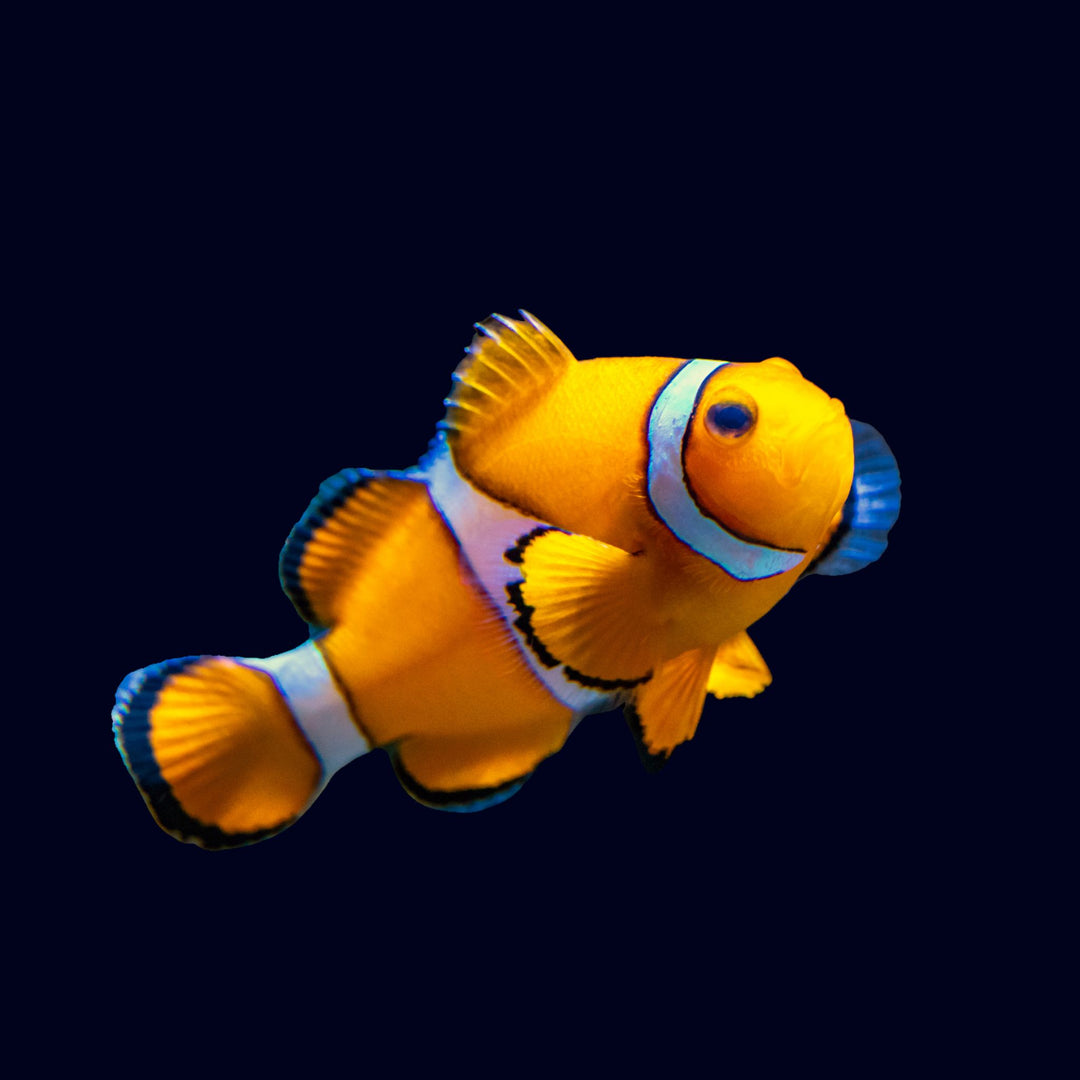Orange Band Nemo Clownfish (A. Ocellaris)
- Shipping Available Around Perth
- In stock, ready to ship
- Backordered, shipping soon
A sustainably cultured Orange Band Clownfish in standard colouration.
Follow our capacity guide for the maximum number of clownfish per aquarium.
Scientific Name: Amphiprion ocellaris (A. Ocellaris)
Capacity Guide: Maximum 3x clownfish in SEA 80L, 4x clownfish in SEA 130L & SEA 200L
Origin: Sustainably cultured
Colouration: Bright orange with three white bands edged in black
Family Structure: Hierarchical; includes a dominant female, breeding male, and juveniles
Preferred Habitat: Traditionally lives in anemones but adapts well to coral and reef shelters
Compatibility: Suited to Living Ecosystems Aquarium and Living Blocks Reef
About Clownfish
Clownfish are among the most popular and recognisable marine fish, loved for their hardy nature, engaging personalities, and vibrant colours. Sustainably cultured clownfish are well-suited to marine aquariums, with their striking colouration and curious behaviour making them a favourite for families and hobbyists alike.
Social Behaviour
Clownfish live in fascinating social hierarchies. Each group has a dominant female, the next largest fish becomes the breeding male, and the rest remain juveniles. If the female dies, the breeding male changes sex to
become the new female, and one juvenile steps up as the new breeding male. This unique social structure helps clownfish maintain a balanced and stable family group.
Habitat & Adaptability
In nature, clownfish live among sea anemones for shelter and protection. In aquariums, however, they readily adapt to alternatives such as corals, reef structures, or rock crevices. They are often seen using large tree corals and xenia for cover. In the Living Ecosystems Aquarium, the Living
Blocks Reef provides similar overhangs and sheltered spaces they naturally
seek.
Breeding
Clownfish are attentive parents. Females lay clutches of 200–400 eggs on flat surfaces close to their chosen shelter. The male guards and fans the eggs to keep them oxygenated until hatching, usually within a week.
Aggression & Stocking
Clownfish can become territorial if kept in numbers above recommended limits. Overcrowding leads to stress and aggression as they defend their hierarchy and chosen shelter. Always follow the capacity guide for the
right number of fish to ensure a peaceful and healthy aquarium.
Varieties
Clownfish are available in Standard, Premium, and Platinum colourations:
- Standard:
Classic orange with three white bands. - Premium:
Distinctive, brighter markings or irregular band patterns. - Platinum:
Rare, mostly white with unique patterning.
These varieties differ in colouration and rarity, which is reflected in their price.
All fish are covered by our 14-day Livestock Warranty, which provides a replacement or store credit if livestock is lost or in poor condition within this period.
To claim, you must:
- Report within 14 days of delivery
- Show adherence to our Care Guidelines
Please note: Improper handling, neglect, or failure to follow the Care Guidelines defined in Terms and Conditions will void this warranty.
Livestock
Shipping is available via Uber Delivery (express same-day service) or free in-store pickup.
Delivery is free for livestock orders over $200.
If you have a scheduled maintenance visit, we can also deliver your order during that time at no extra cost.











